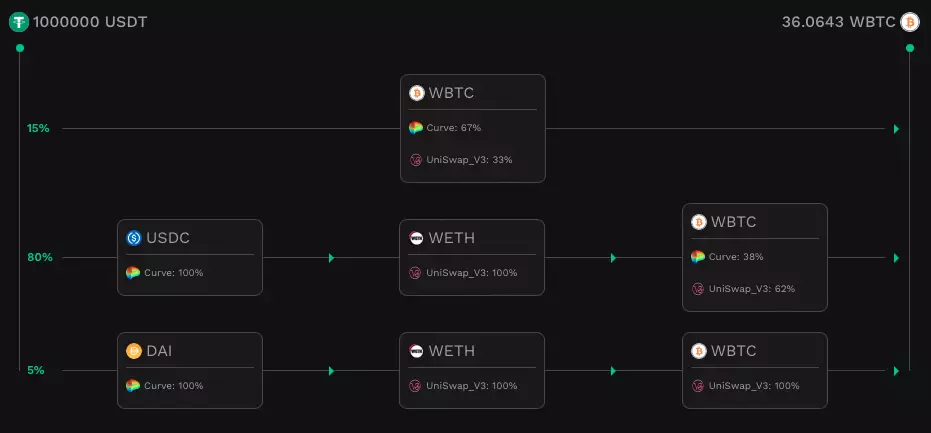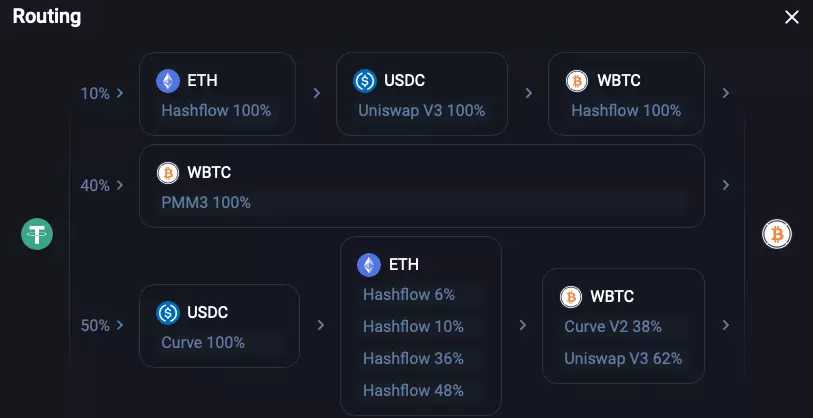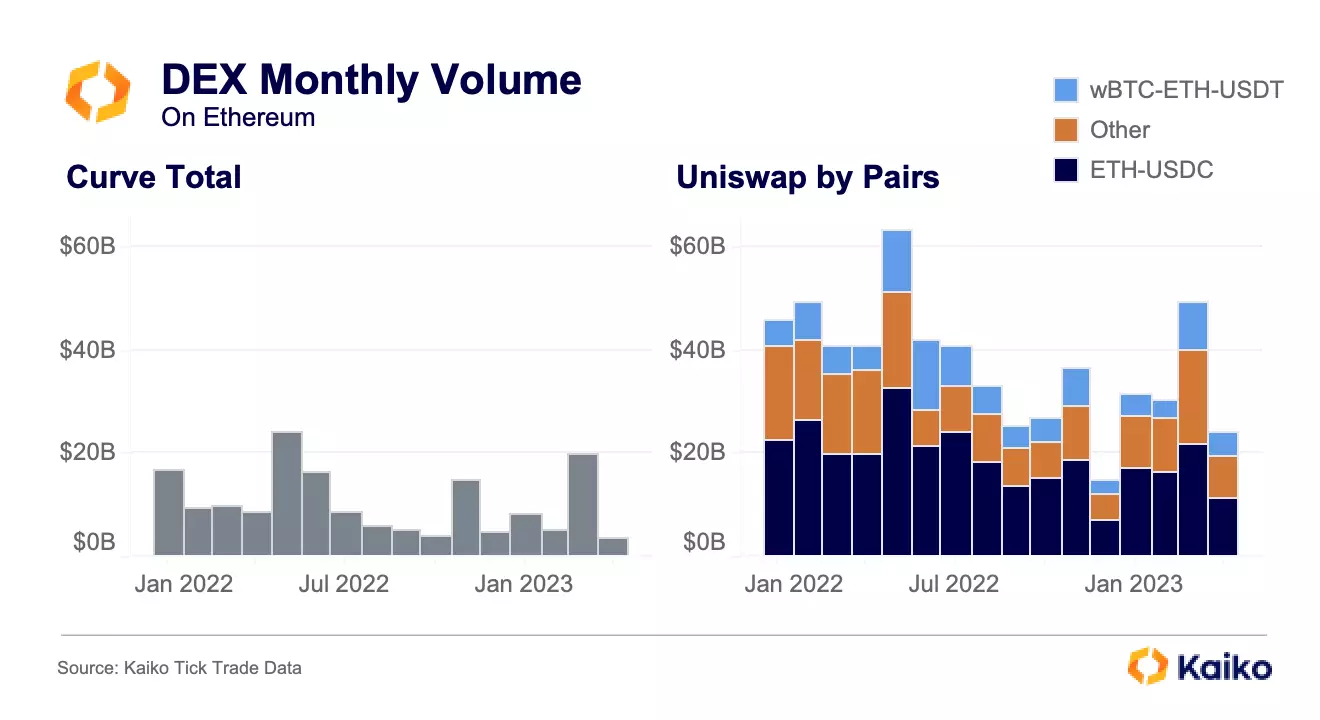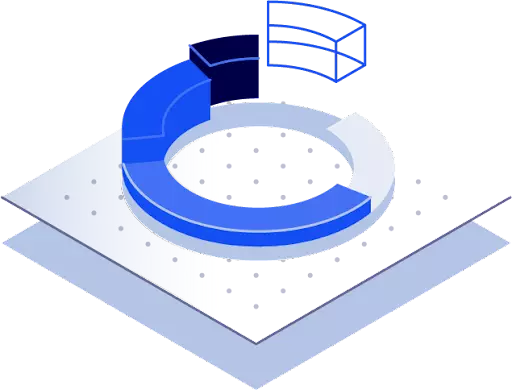Liquidity Flywheel Drives Binance to 300 Million Users

TriCrypto: Curve’s Ace in the Hole
Written by Riyad Carey
11/05/2023
Data Used In This Analysis

More From Kaiko Research
![]()
Derivatives
22/12/2025 Data Debrief
Crypto in 2026, What Breaks, What Scales, What ConsolidatesCrypto markets enter 2026 in a markedly different position than in prior cycle transitions. Rather than resetting after a speculative peak, the market appears to be progressing through a phase of institutional consolidation.
Written by Thomas Probst![]()
Year in Review
01/12/2025 Data Debrief
Kaiko Research's Top 10 Charts of 2025In this report, we look back on 2025 and the key forces that shaped markets. From BTC record highs and fleeting altcoin rallies to major liquidation events and evolving regulation, we examine what shaped a seminal year for crypto.Written by Adam Morgan McCarthy![]()
Stablecoin
24/11/2025 Data Debrief
MiCA's Impact on Crypto in EuropeEurope is progressing with a conservative structured crypto framework that leans towards regulating innovation.Written by Adam Morgan McCarthy![]()
Macro
17/11/2025 Data Debrief
Navigating Fed Fears & AI Bubble BurstingGiven the current macroeconomic context, we are seeing the emergence of two major risks likely to have a decisive impact.
Written by Adam Morgan McCarthy





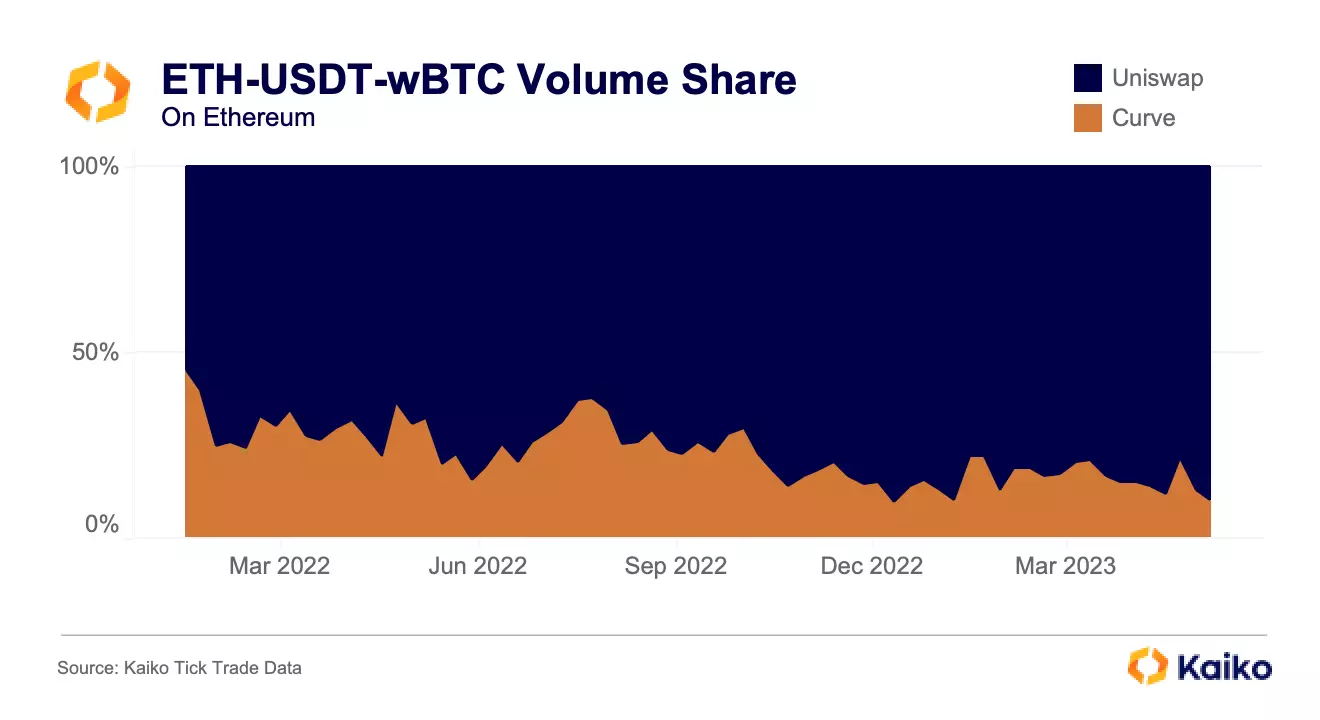
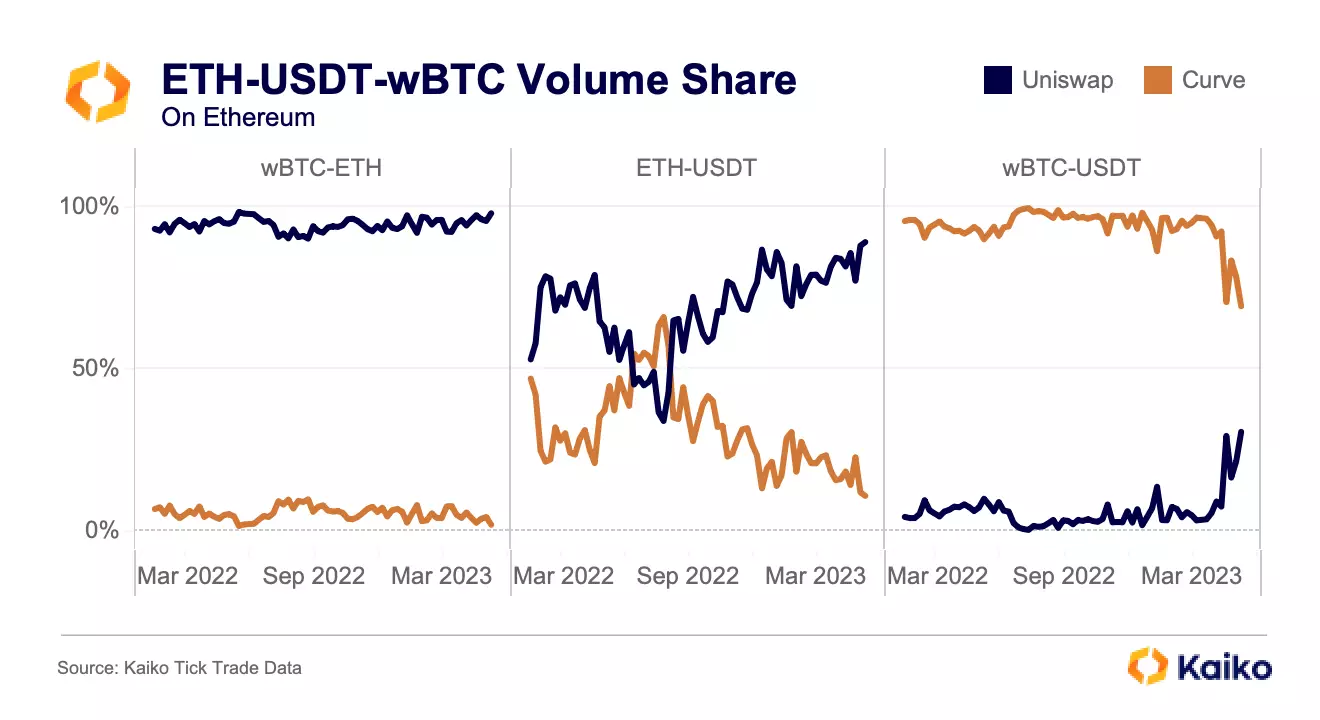
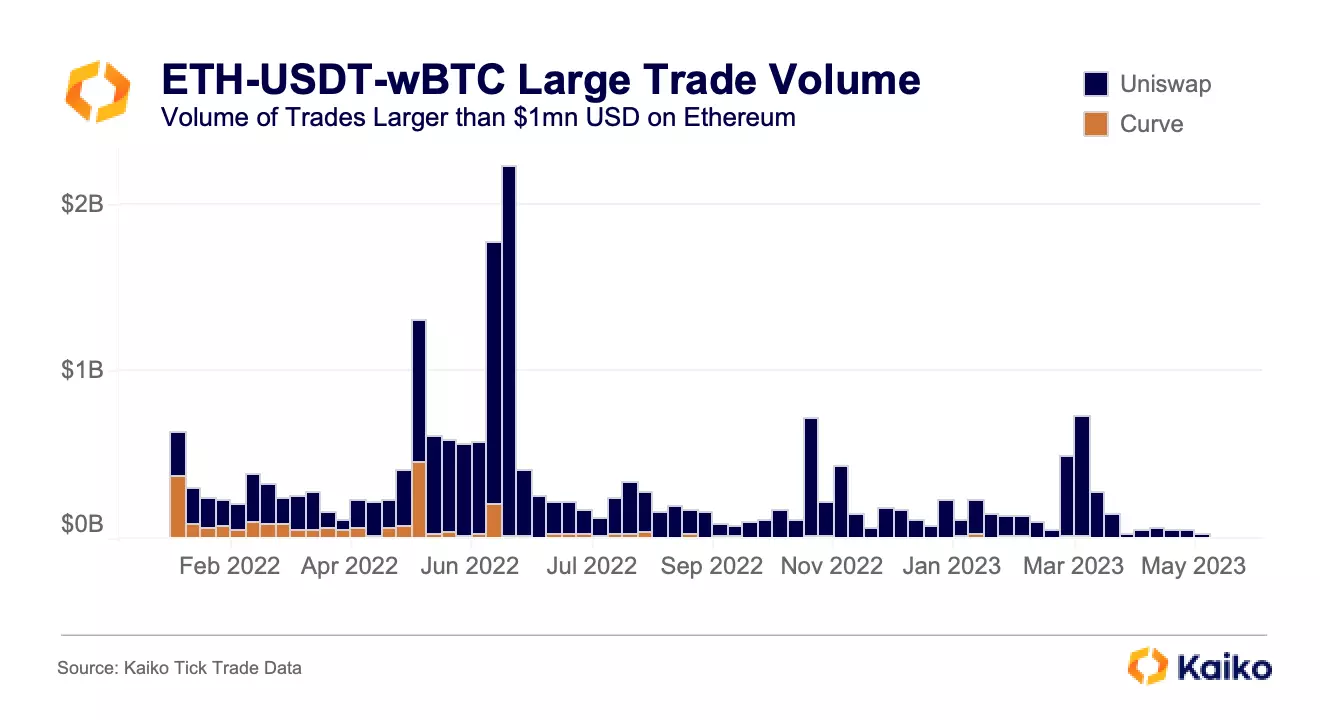 Curve hasn’t had a higher weekly volume of large trades since January 2022 and has been beaten $240mn to $1mn since the start of April.
Curve hasn’t had a higher weekly volume of large trades since January 2022 and has been beaten $240mn to $1mn since the start of April.